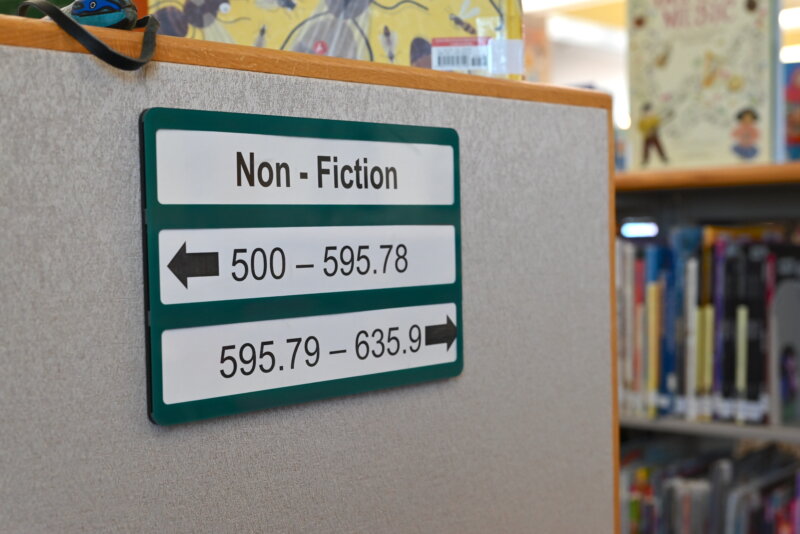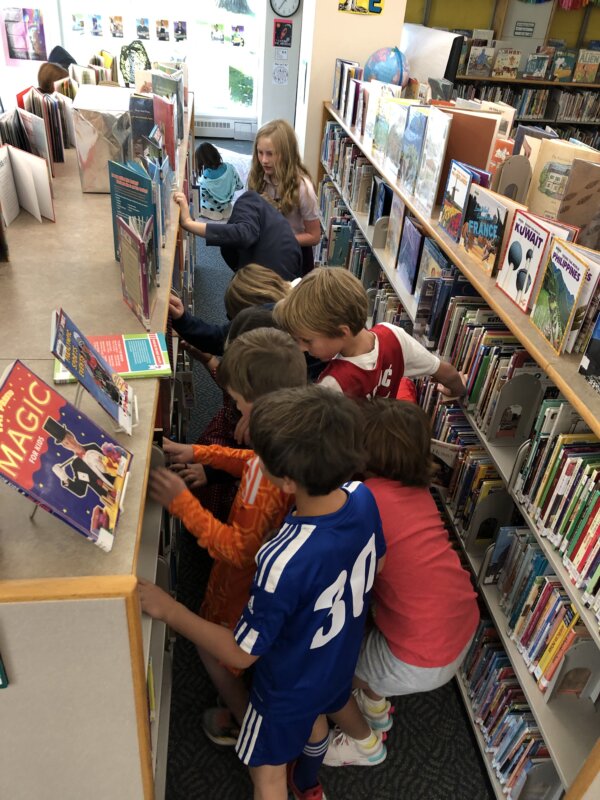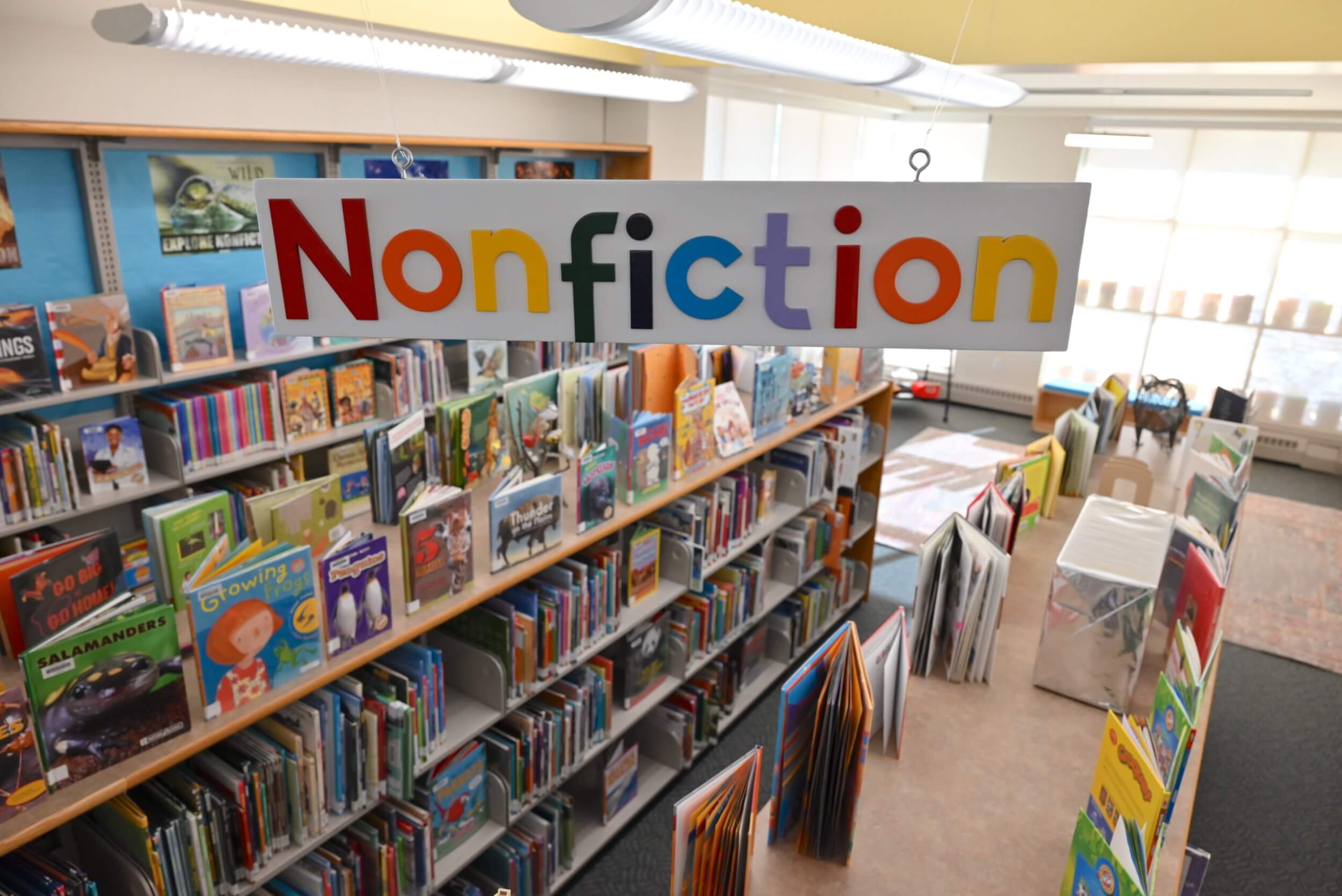Librarians are frequently asked, “So, do you still use the Dewey Decimal System, ha ha ha?” Honestly, this question startles me every time I hear it! Yes, of course we do. It is an excellent system for organizing nonfiction materials by subject. It works, and it is easy to learn. Following are some reasons to love Dewey.
Dewey Decimal Top Ten List
TEN

Nonfiction books are classified by subject. Each book has a number and letter combination (Dewey number + part of author’s last name) that is referred to as ‘the call number’:
000 Computer science, information & general works
100 Philosophy & psychology
200 Religion
300 Social sciences
400 Language
500 Science
600 Technology
700 Arts & recreation
800 Literature
900 History & geography
NINE
If a student is looking for a book about sharks (a common query!), all they have to do is find one shark book and shazaam!—all the other shark books are in the same area, because of the subject organization.
EIGHT
The Online Computer Library Center (OCLC) invites collaborators to help improve representation and accessibility within the Dewey Decimal Classification. Their mission in this effort is important and imperative to the field of Library Science:
“Today, the editors [at OCLC] work to adapt Dewey to demonstrate librarians’ deeply held values of equity, diversity, and inclusion. We can work together to mitigate bias, both by being cognizant of any system’s origins and by making changes to the system.”
SEVEN

We’ve taken the efforts of the OCLC to heart at Colorado Academy, recognizing and utilizing the flexibility and adaptability of Dewey. If a number area no longer meets the needs of the library and the community being served, it is easy to change. For example, the Lower School Library team recently moved books about the U.S. Civil Rights Movement from the 323s (social sciences) to the 973s (U.S. history). The new location makes more sense to us and to our students when they are looking for history books about U.S. history.
SIX

Fun! Fourth Graders, after learning about and practicing with the Dewey Decimal System, were challenged with a Dewey Decimal Escape Room. They worked in teams to solve clues in the nonfiction section. With their Dewey Decoders, knowledge about Dewey, and great teamwork, they escaped the Library! Yay!
FIVE
The Dewey Decimal System has its own holiday! That’s right! Melvil Dewey’s birthday, December 10, has become a special day celebrating the wonderful classification system he invented in Amherst, Mass., back in the 1870s.
FOUR
Many online resources, including this one, report that the Dewey Decimal System is used in 200,000 libraries in 135 countries and translated into 30 different languages. Wow! Once you learn Dewey, you can easily navigate almost all libraries in the world.
THREE
According to East Stroudsburg University in Pennsylvania, “Before the DDC [Dewey Decimal Classification] was invented, libraries had items on the shelf in the order they were acquired, which could make it difficult to find what you were looking for.” Can. You. Even. Imagine?
TWO
The Dewey Decimal System has its very own Dewey number: 025.4
ONE
It’s fun to say! Try it: Dewey Decimal System!
BONUS
Dinner Time Dewey Decimal Discussion:
Why are domestic animals classified as 600s (Technology) in the Dewey Decimal Classification, rather than in the 500s (Science) with zoology?
